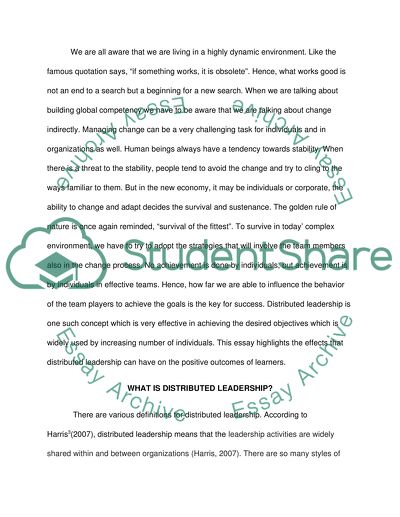Cite this document
(“Distributed Leadership Essay Example | Topics and Well Written Essays - 2500 words”, n.d.)
Distributed Leadership Essay Example | Topics and Well Written Essays - 2500 words. Retrieved from https://studentshare.org/sociology/1501365-distributed-leadership
Distributed Leadership Essay Example | Topics and Well Written Essays - 2500 words. Retrieved from https://studentshare.org/sociology/1501365-distributed-leadership
(Distributed Leadership Essay Example | Topics and Well Written Essays - 2500 Words)
Distributed Leadership Essay Example | Topics and Well Written Essays - 2500 Words. https://studentshare.org/sociology/1501365-distributed-leadership.
Distributed Leadership Essay Example | Topics and Well Written Essays - 2500 Words. https://studentshare.org/sociology/1501365-distributed-leadership.
“Distributed Leadership Essay Example | Topics and Well Written Essays - 2500 Words”, n.d. https://studentshare.org/sociology/1501365-distributed-leadership.


